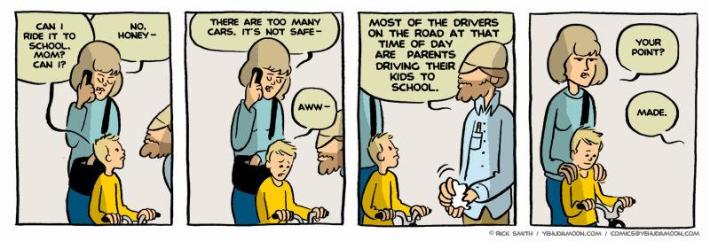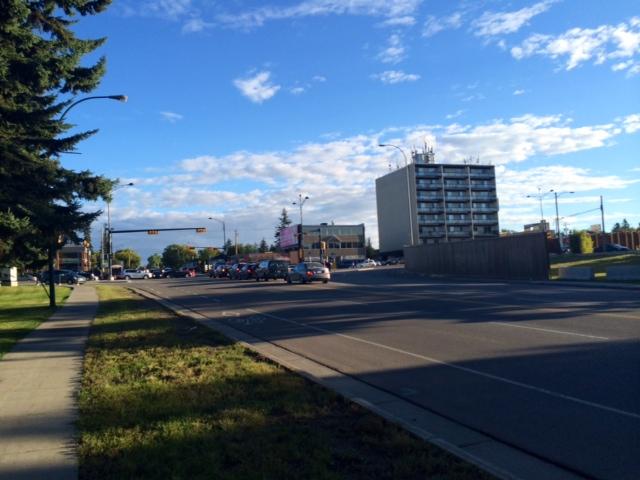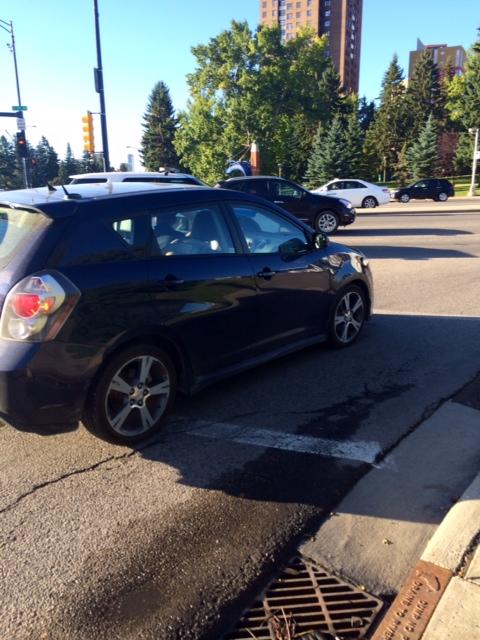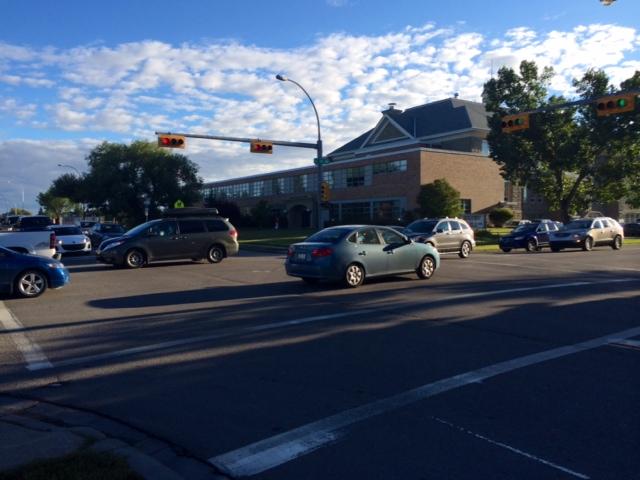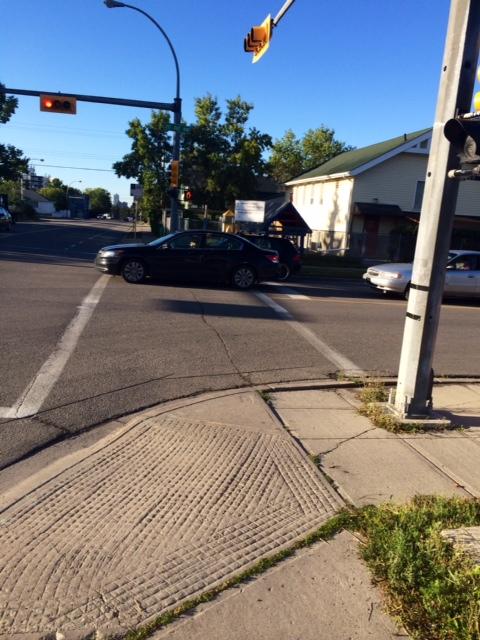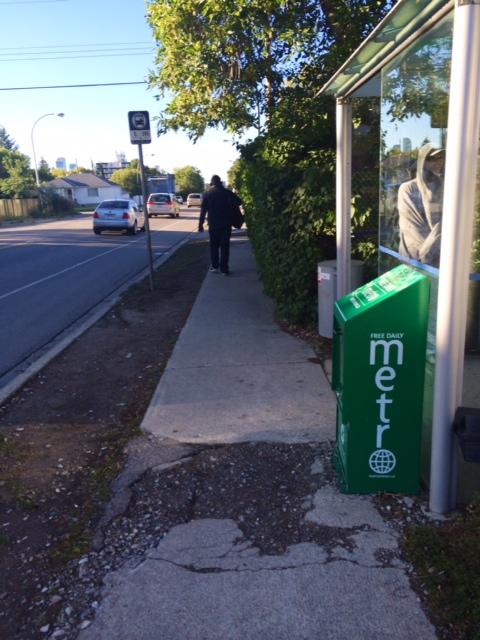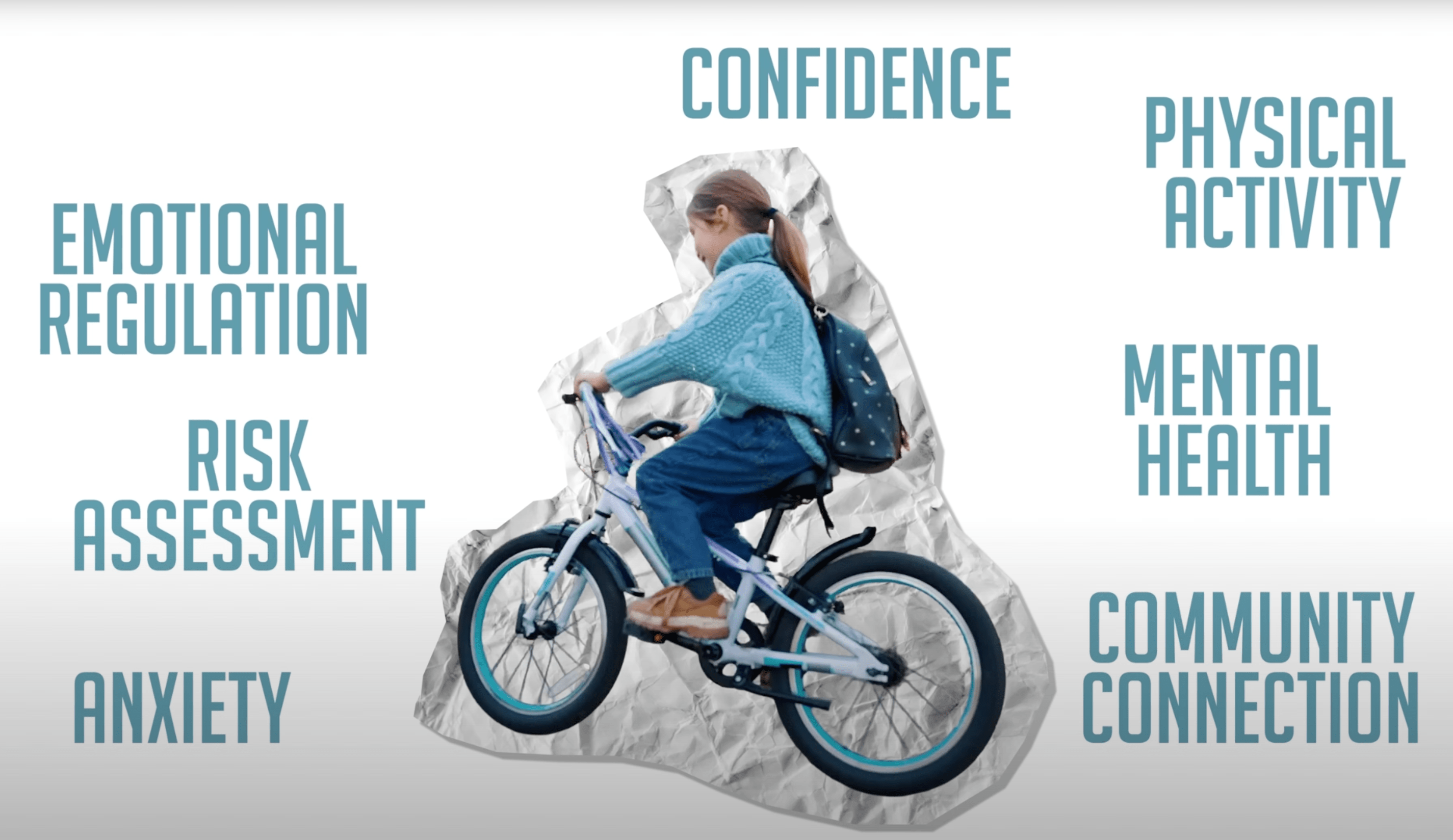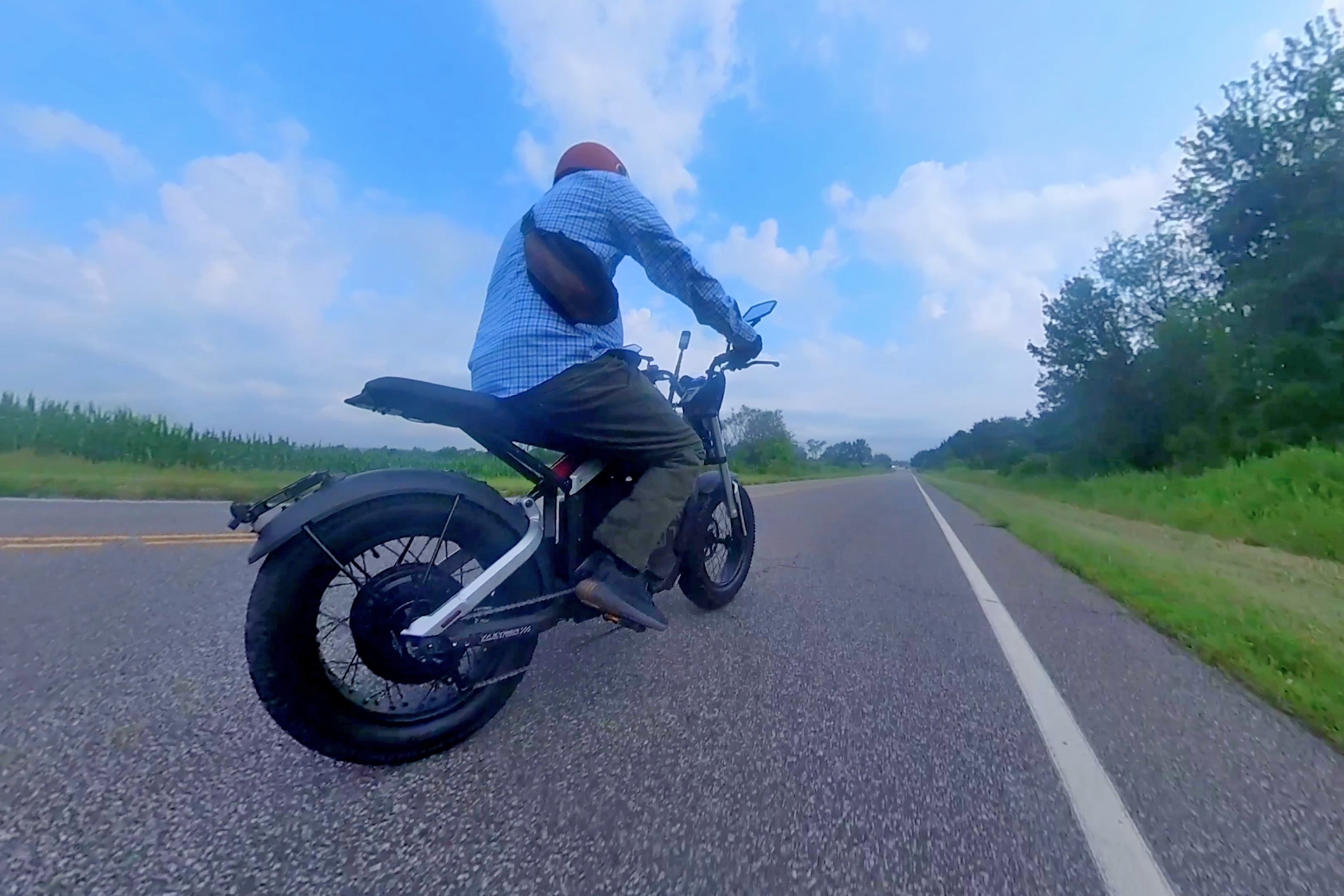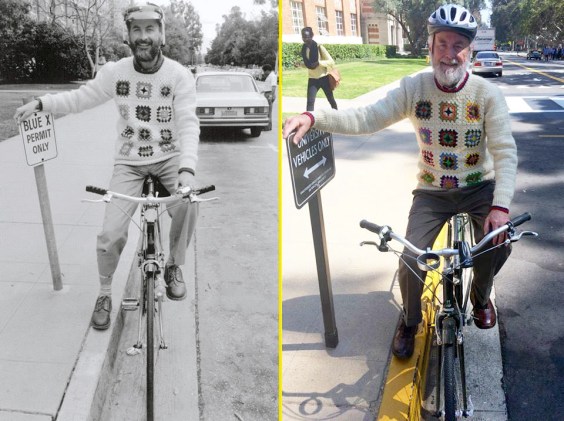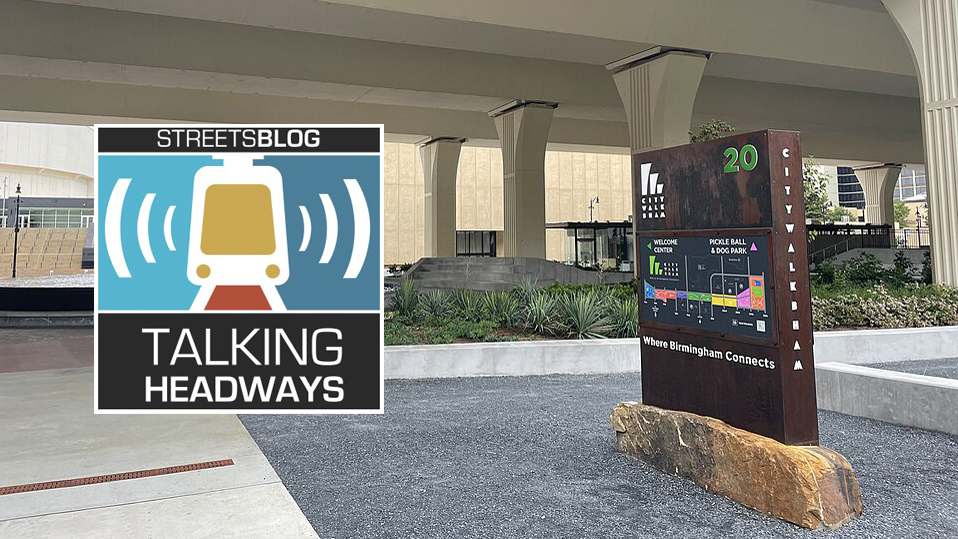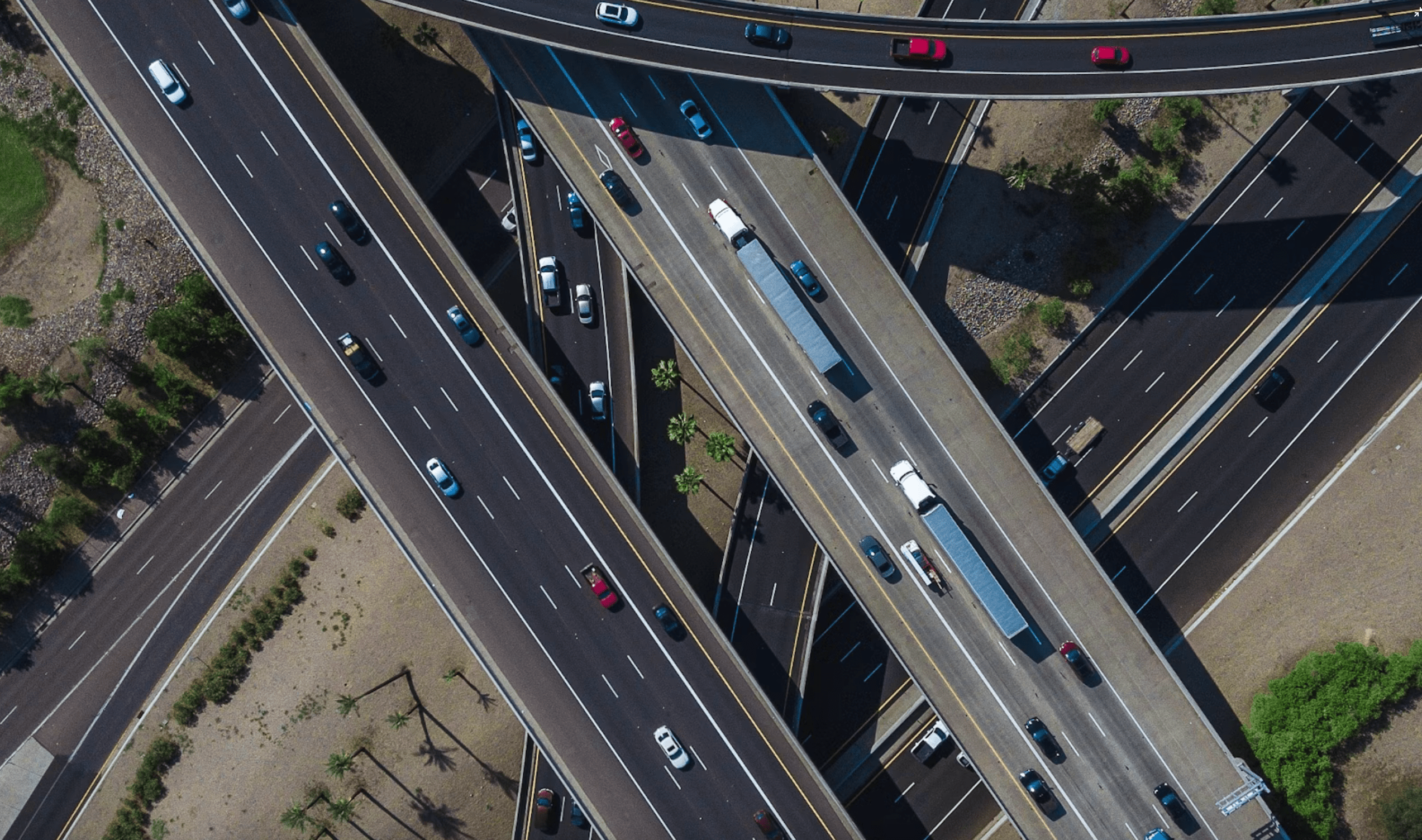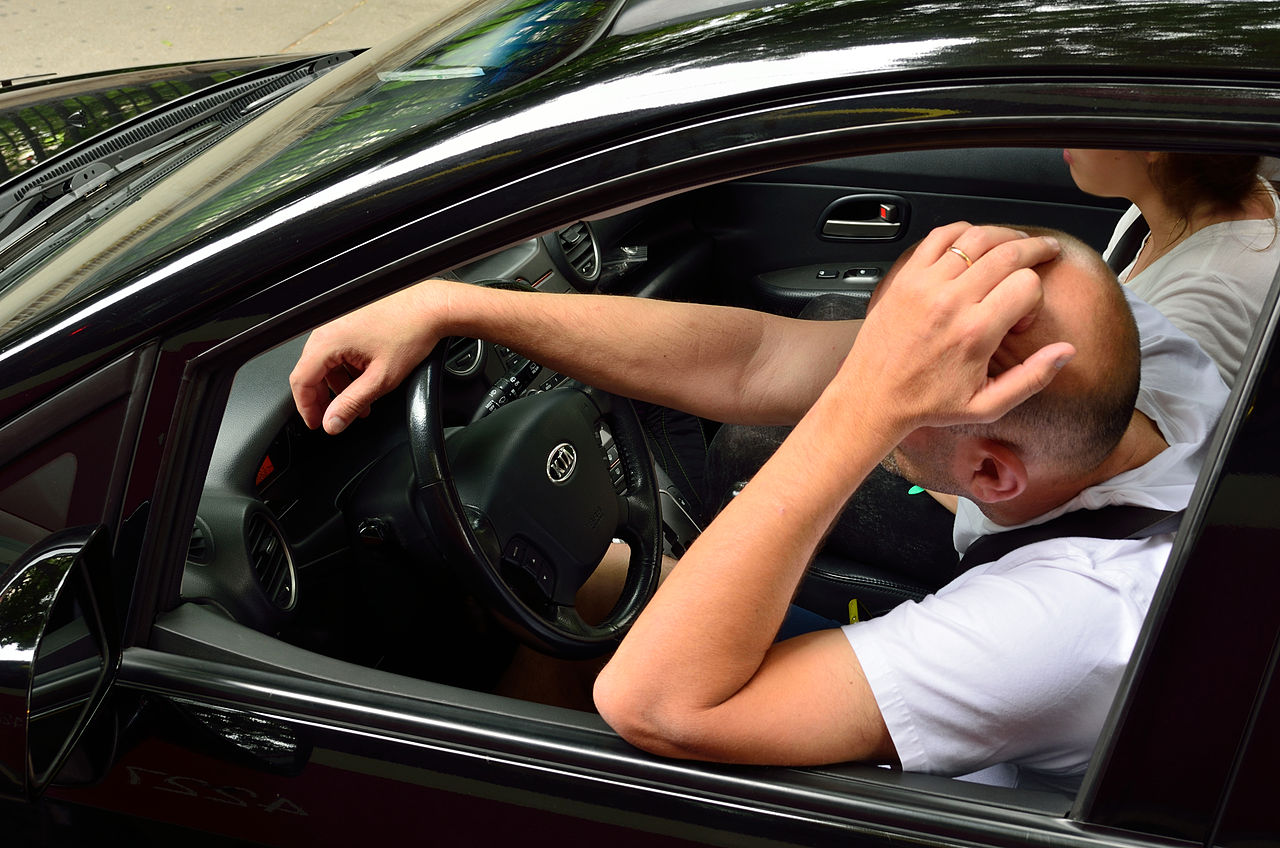"So who's up for a long rant/photo-essay about kids walking to school and urban design on this fine back-to-school Thursday morning?" asked Canadian author and journalist Chris Turner on Twitter this morning. And so began a numbered tour of the hazards encountered on his 9-year-old daughter's walk to school.
It was partly inspired by this Yehuda Moon cartoon:
But Turner wasn't satisfied with the cartoon's cheeky conclusion that parents are making bad decisions. "Too often, these discussions blame PARENTS," he tweeted, "not URBAN DESIGN."
To illustrate his point, he tweeted "a photo primer in how urban design in an inner-city community encourages parents not to even think about letting their [kids] walk."
By the way, Turner's daughter is trying out the walk to school because the 18-block journey, which takes six to eight minutes in a car, takes 55 minutes on the school bus. She's the first on and the last off, commuting two hours a day to get 18 blocks. It takes half an hour to walk it. Last year, her parents drove her every day, but now they're trying the walk.
"This morning was my first on walking duty," Turner wrote. "Spent the entire walk explaining to our 9yo all the different ways cars had been prioritized. Because I want her to have plenty of ammo for future therapy."
Two blocks from Turner's house on a walkable street with a sidewalk they come face to face with the car-centric, ped-hostile design he was talking about: this "outsized intersection" with "gas station sliplanes, ped markings beyond faded."
It's the "first unequivocal sign to pedestrians: beyond be serpents. Cease and desist," he writes.
But Turner and his daughter didn't cease and desist. They pressed on. And found hostile ground like this...
... with narrow sidewalks that give "barely enough space for 9yo & dad to walk side by side, bellow over traffic noise."
Walk signals don't permit enough time for a kid to cross the street at a comfortable pace. The pavement is cracked and unwelcoming. Sliplanes, or rounded right turn lanes that allow drivers to avoid coming to a complete stop, abound. Drivers don't yield. Expensive German cars, one after another, block their progress.
A few more street crossings (with absolutely no pedestrian markings) and now the school is in sight! And what a sight it is:
Here's a brilliant design, in which the curb cut dumps pedestrians (particularly those in wheelchairs) into traffic instead of a crosswalk.
Of course, Turner's daughter could take a city bus instead of navigating the land mines on this walk. And she would wait at this bus stop. "See how the crumbled pavement says WELCOME, STUDENTS!" Turner writes.
With that, Turner's point is made. Even parents with the purest of intentions can get railroaded by car-centric infrastructure into driving their kids to school every day. That's why, in the United States, only 35 percent of kids living within one mile of school walk or bike there.
That number was 89 percent in 1969.
